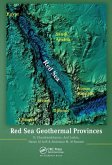Dive into the fascinating world of Cretaceous geology with "On the Red Chalk of England" by Thomas Wiltshire. This meticulously prepared edition offers a detailed exploration of the distinctive red chalk formations found in Great Britain. Wiltshire's work, a cornerstone of paleontological study, delves into the composition, origins, and significance of this unique geological layer. Explore the relationship between the red chalk and other geological formations, particularly the iconic chalk cliffs of England. This book provides valuable insights into the natural history of the region and offers a glimpse into the geological processes that shaped the landscape. Perfect for anyone interested in geology, paleontology, or the natural history of Great Britain, "On the Red Chalk of England" remains a relevant and insightful study of a specific and significant geological feature. This work has been selected by scholars as being culturally important, and is part of the knowledge base of civilization as we know it. This work is in the public domain in the United States of America, and possibly other nations. Within the United States, you may freely copy and distribute this work, as no entity (individual or corporate) has a copyright on the body of the work. Scholars believe, and we concur, that this work is important enough to be preserved, reproduced, and made generally available to the public. We appreciate your support of the preservation process, and thank you for being an important part of keeping this knowledge alive and relevant.
Bitte wählen Sie Ihr Anliegen aus.
Rechnungen
Retourenschein anfordern
Bestellstatus
Storno




![Report of the Country in the Vicinity of Red Lake and Part of the Basin of Berens River, Keewatin [microform] Report of the Country in the Vicinity of Red Lake and Part of the Basin of Berens River, Keewatin [microform]](https://bilder.buecher.de/produkte/65/65625/65625706m.jpg)




